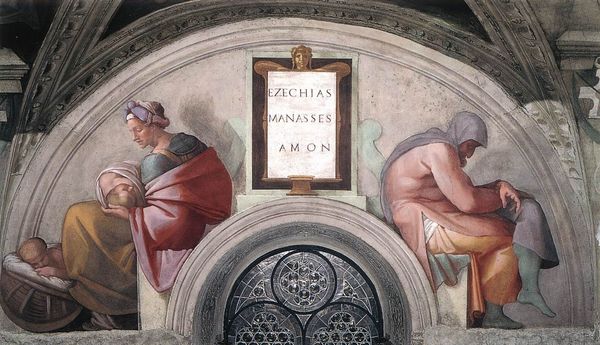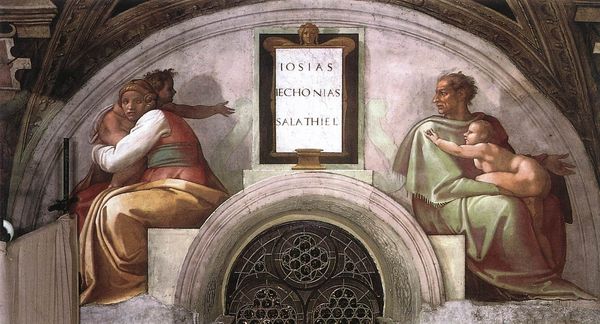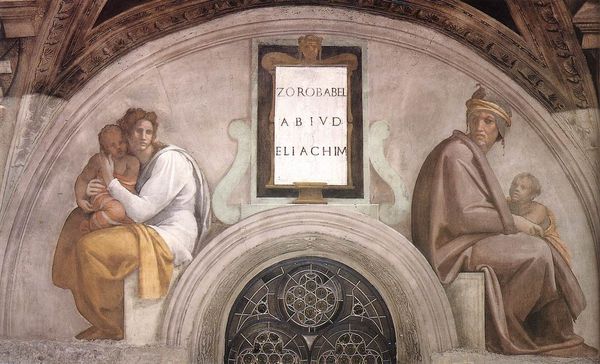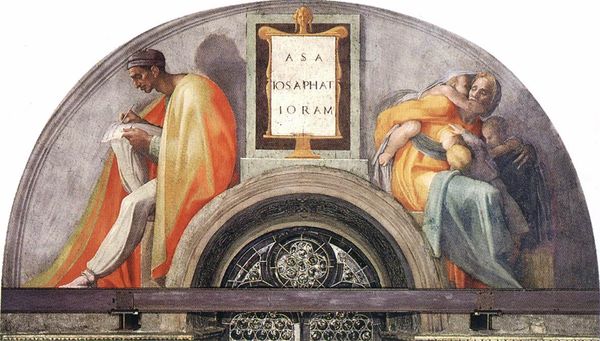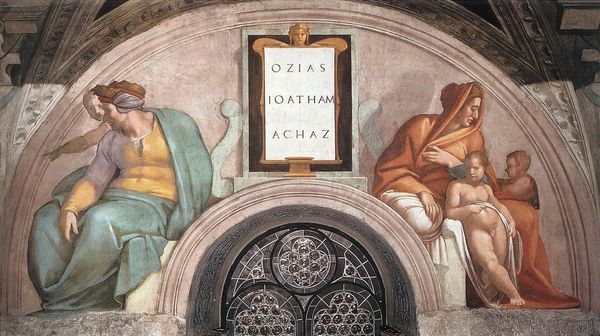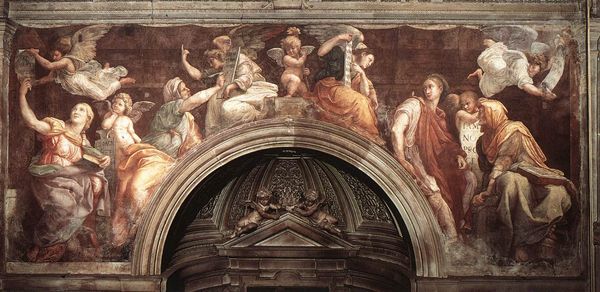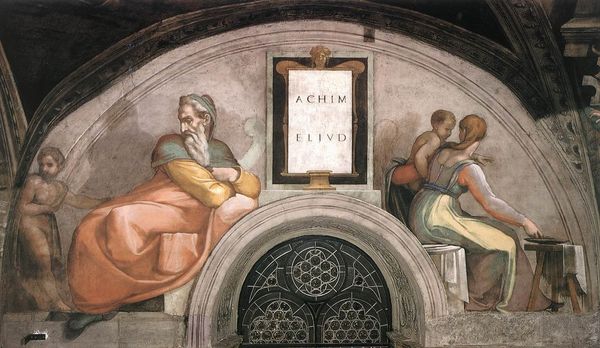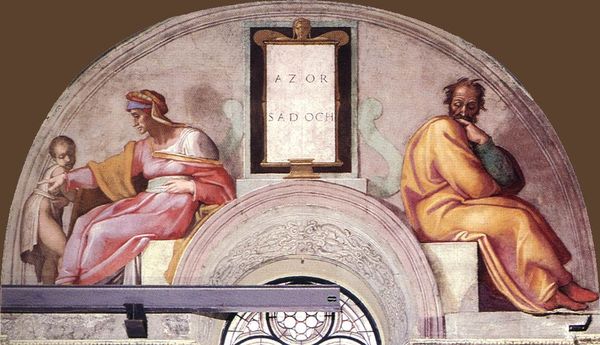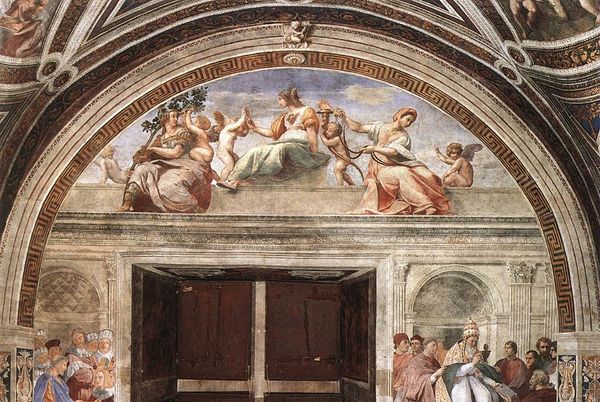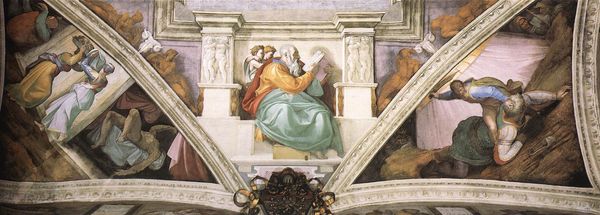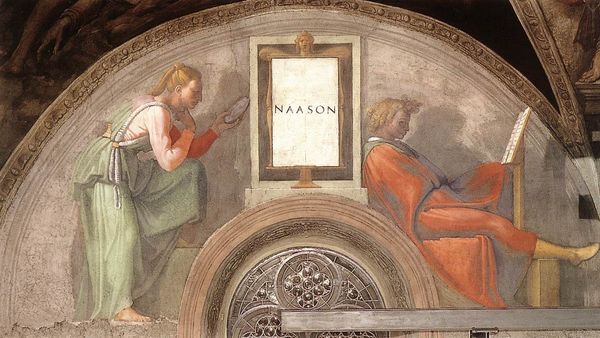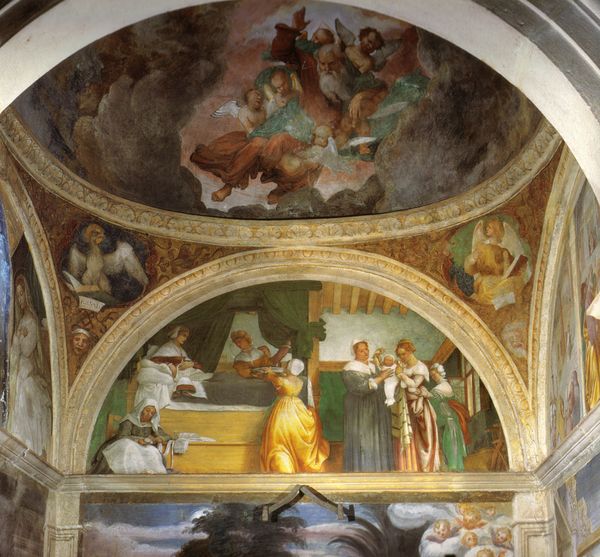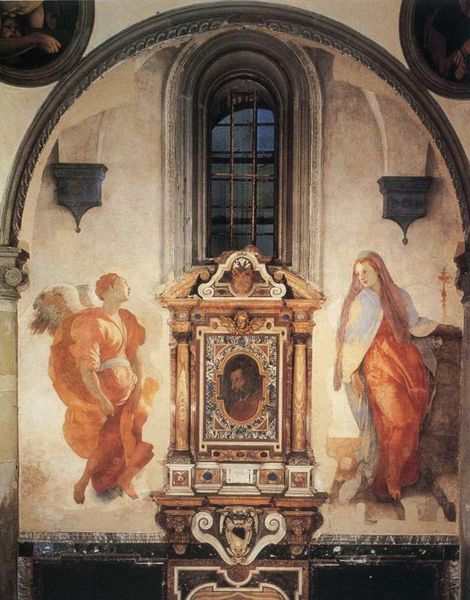The Ancestors of Christ: Rehoboam, Abijah 1512
🔒Audio guide available with collection purchase
painting, fresco
#
portrait
#
high-renaissance
#
narrative-art
#
painting
#
prophet
#
sculpture
#
holy-places
#
figuration
#
fresco
#
underpainting
#
christianity
#
men
#
history-painting
#
italian-renaissance
#
christ
Dimensions: 215 x 430 cm
Copyright: Public domain
Comments
No comments
Be the first to comment and join the conversation on the ultimate creative platform.

